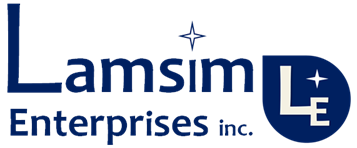Posts Tagged ‘stack-up’
PCB Laminate Construction
Present day FR4-style laminates used for PCB fabrication rely on woven glass fiber yarns to maintain the structural integrity of the finished product. These yarns are made up of electronic or E-Glass material. Because it is the same glass used in everything from Corvette bodies to boat hulls, it is a very inexpensive reinforcement material. NE-Glass has improved electrical and mechanical performance over E-Glass. It is used for higher performance laminate products such as Park Nelco 4000-13SI.
 The table on the left shows five of the most common fiberglass styles used for laminate construction today. When glass fiber yarns are woven into fabric, the “Warp” yarns run the length of the roll, while the “Fill or Weft” yarns run the width. Yarn count refers to the number of warp threads per inch by the number of fill threads per inch.
The table on the left shows five of the most common fiberglass styles used for laminate construction today. When glass fiber yarns are woven into fabric, the “Warp” yarns run the length of the roll, while the “Fill or Weft” yarns run the width. Yarn count refers to the number of warp threads per inch by the number of fill threads per inch.
Prepreg is the term we commonly use for a weave of glass fiber yarns pre-impregnated with resin which is only partially cured. The glass to resin thickness ratio defines the overall thickness of a prepreg mat. You can see from the table above, the typical resin content is a function of the thread count and yarn diameter.  For example, the figure on the far left illustrates styles like 106 and 1080 having smaller diameter yarns and higher resin content. The right hand figure is indicative of yarns with larger diameter and lower resin content like style like 2116 or 7628.
For example, the figure on the far left illustrates styles like 106 and 1080 having smaller diameter yarns and higher resin content. The right hand figure is indicative of yarns with larger diameter and lower resin content like style like 2116 or 7628.
When copper foil is attached to one or both sides of fully cured prepreg mats, the finished laminated panel is called a core. Both cores and prepreg mats are available in various panel sizes and thicknesses.
There are several different kinds of resin systems in use today to form prepreg and cores. The general specification FR4 is the most common. It refers to a specific fire-retardant level rather than specific resin chemistry. Since you have a choice of many laminates that meets the FR4 fire specification, there is no such thing as “standard FR4”. That being said, most of us consider “standard FR4” to mean a laminate having a typical dielectric constant (Dk) of about 4.3 and dissipation factor (Df) of 0.020 – 0.025 at 1MHZ and 50% resin content.
Each family of resin systems have their unique electrical and mechanical characteristics depending on the fiberglass style and resin chemistry. For example, Nelco 4000-6 at 50% resin content has a typical Dk of 4.0 and Df of 0.023 at 2.5GHz. A higher performance resin system like Nelco N4000-13 on the other hand, has a Dk of 3.7 and Df of 0.009 for the same resin content and frequency. This tells us two things:
-
A lower Dk means we can ultimately achieve an overall thinner board for the same characteristic impedance.
-
A lower DF means less high frequency attenuation allowing us to run at a higher bit rate or have longer traces.
When designing your board stack-up, it is best to refer the manufactures data sheet for exact values. The Park Electrochemical Corp. (Nelco) website is an excellent resource to explore when trying to decide on the best dielectric material to use for your next high-speed design.
